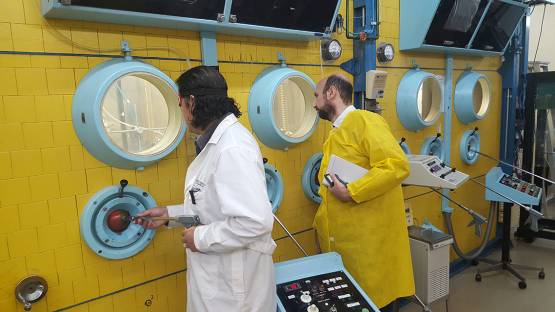Six IAEA nuclear safety specialists joined more than 700 other leading international experts from 62 countries at the 15th International Radiation Protection Association Congress (IRPA15) to share new research, challenges and solutions in relation to radiation protection measures around the world.
Speaking at the virtual opening ceremony, IAEA Deputy Director General for Nuclear Safety Juan Carlos Lentijo said: “Without a high level of radiation safety, nuclear technology cannot achieve its full potential, and public trust and confidence are essential in the process. The IAEA’s principal safety objective is to protect people and the environment from the harmful effects of ionizing radiation. But we must strike a fine balance so that we achieve our objective without unduly restricting the many beneficial uses of radiation on which society depends.”
IRPA meets every four years, and the IAEA took an active role in this two-week event, from 18 to 27 January, by holding eight sessions which informed and facilitated discussion among radiation protection professionals, on topical issues.
Participants learned about the IAEA’s role and activities in the following areas: post accident dose monitoring and decision making; radiation protection infrastructure: challenges in developing countries; control of radioactivity in food and commodities: current international proposals for the control of radioactivity in food; and the Bonn Call for Action.
“It is paramount that leading global experts consistently meet to share insights and best practices in order to address new and emerging challenges, such as how to implement basic radiation safety protection in developing countries and the education of the next generation of scientists, who may refer to social media for learning and development rather than traditional methods,” said Rodolfo Cruz Suárez, IAEA Radiation Safety and Monitoring Programme Officer and presenter at the session on infrastructure challenges in developing countries.
IAEA specialists also held refresher courses on the 2014 International Basic Safety Standards and strengthening radiation safety culture in medicine, along with a session on the IAEA approach to managing the interface between safety, and a panel discussion on security and radiation protection culture.
Recommendations and strategies to enhance radiation protection based on the latest IAEA safety guides were shared, including Occupational Radiation Protection, Radiation Protection and Safety in Medical Uses of Ionizing Radiation, Radiation Safety of Gamma, Electron and X Ray Irradiation Facilities and Protection of the Public against Exposure Indoors due to Radon and Other Natural Sources of Radiation. During the discussions, other major players in the field including the World Health Organization, the International Labour Organization, the International Commission on Radiological Protection and national regulatory authorities also shared their experiences and best practices in this field.
IRPA’s efforts provide global benchmarks of good practice and ensure that robust safety processes are applied and adhered to in the peaceful application of radiation technology.
“As many of us know and have experienced, radiation sources have many peaceful, every-day applications in medicine, industry and research. Nuclear technologies’ public health contributions range from helping us test for diseases such as Covid-19 to providing therapies that send cancers into remission,” Lentijo explained, adding that “its environmental benefits include providing electricity with fewer carbon dioxide emissions and breaking down our plastic waste. Every year the new uses for this precious resource continue to increase. Therefore, to us all it is critical that radiation safety is about the management of radiation exposure.”






